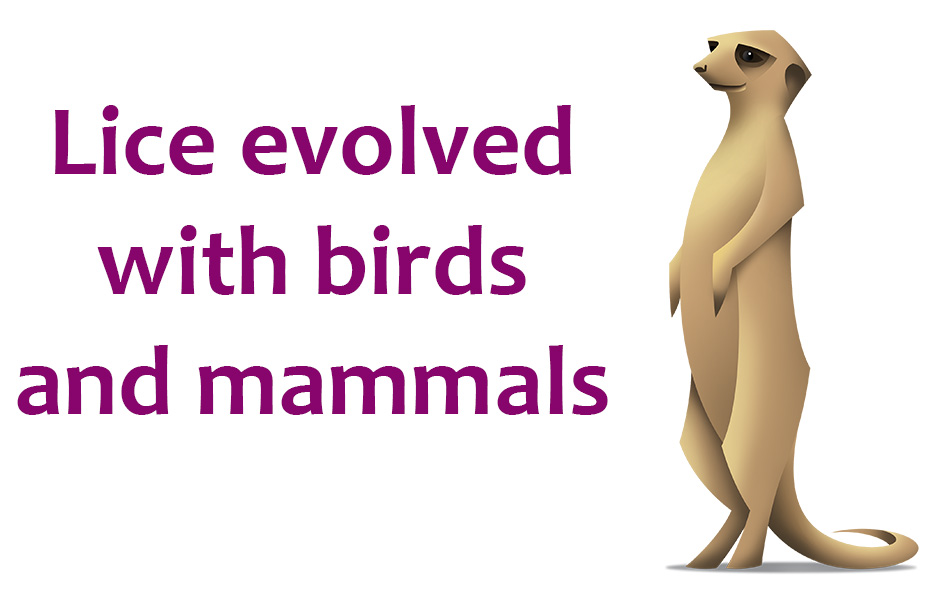Parasites are thought to diversify with their host species, but the theory has rarely been tested. Kevin Johnson at the University of Illinois and his colleagues sequenced the genomes of 46 species of lice that parasitise birds or mammals, and two non-parasitic bark lice, and constructed an evolutionary tree. They estimated that parasitic lice first emerged between 90 and 100 million years ago, but didn’t begin to diversify until 66 million years ago – around the time of the dinosaurs’ extinction.
The study identified three groups of lice – one specialising in birds, one specialising in mammals, and one mixed group including bird-eating species and mammal-eating species. Each group began to diversify shortly after 66 million years ago. Their evolutionary tree showed that sucking lice (I know, all lice suck, but these ones have piercing mouth parts that allow them to suck blood from their hosts) evolved from chewing lice. Like their hosts, lice of Australian marsupials diverged from the other lice early and are now only distantly related to other modern lice.
After the K-Pg (Cretaceous–Paleogene) boundary where all non-avian dinosaur went extinct, parasitic lice rapidly radiated into the nearly 5000 species found today, supporting the hypothesis that new species of bird and mammal offered just as many new niches for parasites to exploit.
Want to Know More?
- Kevin P. Johnson, Nam-phuong Nguyen, Andrew D. Sweet, Bret M. Boyd, Tandy Warnow, Julie M. Allen (2018) Simultaneous radiation of bird and mammal lice following the K-Pg boundary. Biology Letters doi: 10.1098/rsbl.2018.0141




